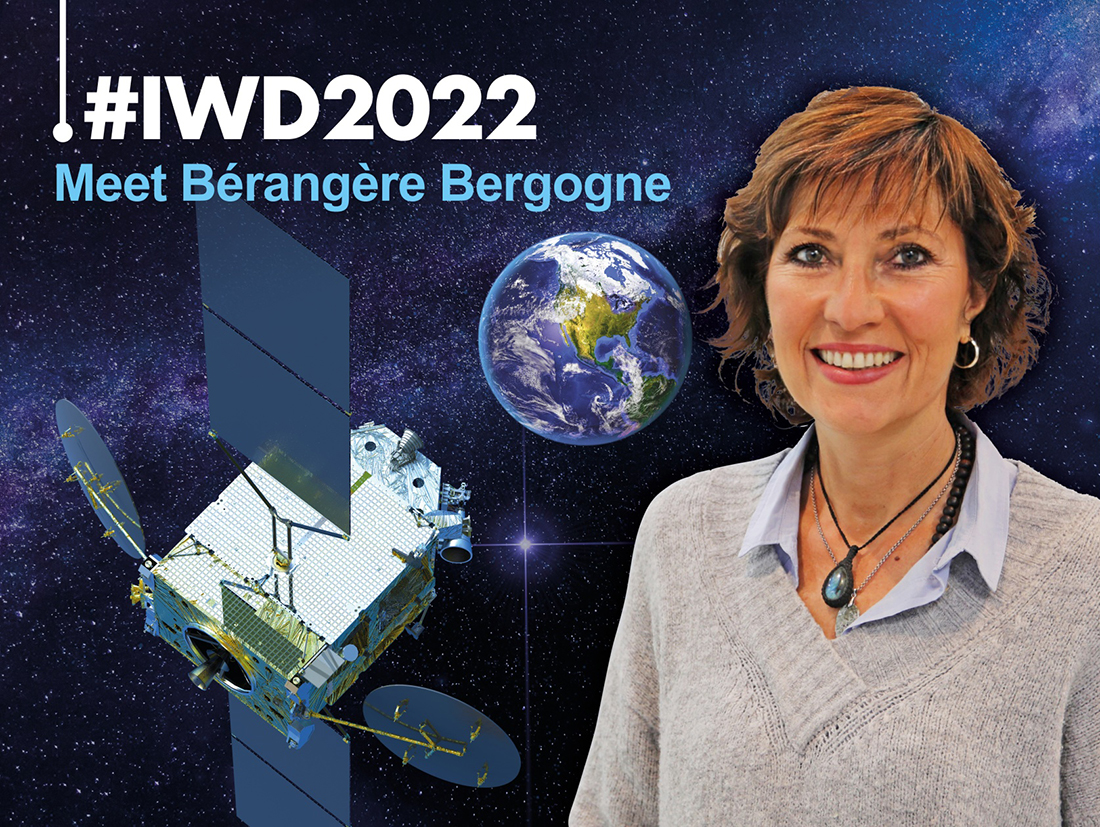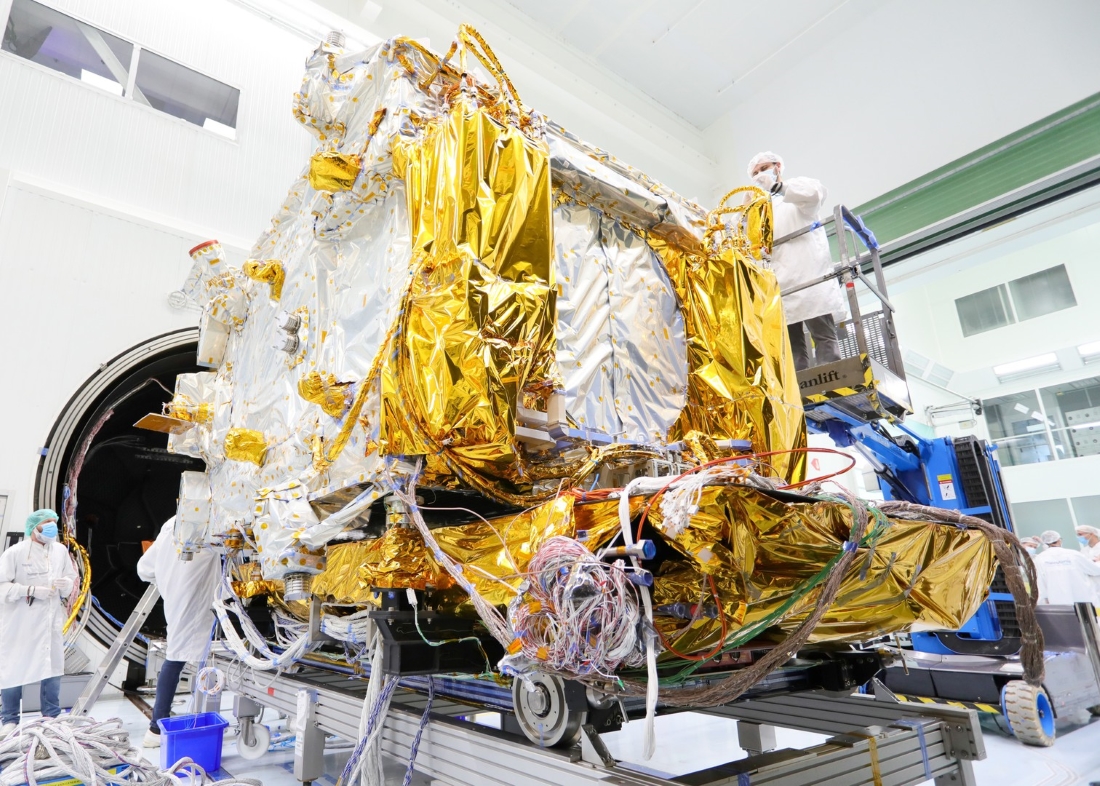Meet Bérangère Bergogne, Program Manager for communications satellites
Could you trace your career path for us?
After graduating from the UTC engineering school in Compiègne in 1992, I began my career with the aeronomy research laboratory (SA) at the national scientific research center CNRS, where I worked on a system for a Mars exploration mission. My interest in space goes back to my teenage years, and I was lucky enough to find my first job in this sector. Some years later, I moved to Southeast France where I worked as a subcontractor for Aerospatiale, the forerunner of Thales Alenia Space, at its facility in Cannes.
One thing led to another, and I joined Thales Alenia Space in 2000. In the 20 years since, I’ve been involved in many programs, mainly in telecommunications. I’ve had different jobs, which is what makes being an engineer in such an enterprising company like ours so rewarding. I’ve worked in software sustainment, satellite assembly, integration and testing, satellite stationkeeping, and development of ground segments. My contributions span a range of programs including Astra 1K for SES, France’s Syracuse 3A and Syracuse 3B military satellites, Indonesia’s Palapa-D satellite, the CIEL2 satellite, Brazil’s dual-use SGDC system, Inmarsat GX5 for mobile communications, and SATRIA, another Indonesian satellite set to bridge the digital divide in that region of the globe.

I’ve also been fortunate to work on constellation programs like Globalstar 2—the very first constellation for which Thales Alenia Space was prime contractor—and O3b. We built 24 satellites for Globalstar, and 20 for O3b. On the strength of this expertise, Thales Alenia Space was subsequently selected to build Iridium NEXT, an avant-garde system of 66 operational satellites in low Earth orbit. Today, we’re seen as the benchmark in constellations. Last year we were chosen by Canadian operator Telesat to build Lightspeed, a constellation of some 300 LEO satellites designed to deliver communications services for mobile connectivity, 4G and 5G backhaul, and governments and business.
I’m currently in charge of the SES C-band program to supply the SES-22 and SES-23 satellites for SES.
Can you tell us more about the SES-22 program?

It’s hard to dissociate SES-22 from SES-23, as both satellites are set to deliver direct-to-home broadcast services in North America. They will enable SES to meet the deadline set by the U.S. Federal Communications Commission (FCC) to free up C-band spectrum required to deploy 5G in the United States. So it’s a strategic program for our customer. The common denominator between the two satellites is Thales Alenia Space’s proven Spacebus 4000 B2 platform. Both identical, SES-22 and SES-23 are the 11th and 12th satellites built around this bus, so it’s a mature technology that has proved robust and reliable over the years. And because it’s a tried-and-tested technology, we’ll be able to deliver a geostationary satellite within two years or less.
Thales Alenia Space has a range of product lines that can be tailored to the new expectations of the telecommunications market. With our Spacebus 4000 B2 especially suited to operators’ regional requirements, Spacebus NEO providing VHTS solutions to deploy fast broadband services worldwide, and our new Space Inspire all-digital product line that’s fully reconfigurable in orbit, we’re delivering real-world solutions to help operators drive connectivity and mobility, and to bridge the digital divide.
What for you are the standout moments of your career?
Without a shadow of a doubt, Brazil’s SGDC program, for which I was tasked with delivering the ground segment. The day of the final acceptance review in Brasilia, in the company of the customer and Thales Alenia Space’s team, was emotionally charged, with a mixture of joy and sadness in the air reflecting the culmination of months working together and the great relationship we’d developed with our Brazilian customer. This marked the end of a great adventure, with all its ups and downs, and the beginning of a new one for the customer: we were handing over the control centers. This program was a real accomplishment, both for the team and for me personally. It’s without any doubt the fondest memory of my career to date.
What advice do you have for future engineers reading this?
I’d say don’t be too scholarly in your approach, try to maintain perspective and see the future applications and value of what you’re learning as students, unlike me when I was in your shoes (laughs). Now, you might say that, without experience, it’s hard to gain that perspective, and you’d be right (laughs), which is why internships and work-study placements are so important. After that, what really stayed with me from my time in engineering school is the need to always be curious. It taught me to “learn how to learn”, to hunt out information and be resourceful. Agility and flexibility are also key attributes in this business. So, my main advice is: be yourself, don’t be afraid and be curious!
What qualities are needed in your job?
To be a Program Manager, you need to be a good team motivator. I often liken my job to that of a conductor and sports coach combined. Strong interpersonal skills, and being a good listener and communicator are obviously essential at all levels, be it with customers, management or teams. And as a project is never all plain sailing, you need to be calm, clear sighted, and have the strength to make decisions and manage priorities to successfully pursue it through to completion. An ability to see the glass half full rather than half empty when faced with unexpected issues also helps (laughs). So, in a nutshell, stay positive and resilient at all times and never forget that the team and the customer are both key to making the project work—because when everything’s said and done, it’s a team effort!
Photos & artistic view © Thales Alenia Space - Video © Thales Alenia Space/Master Image Programmes